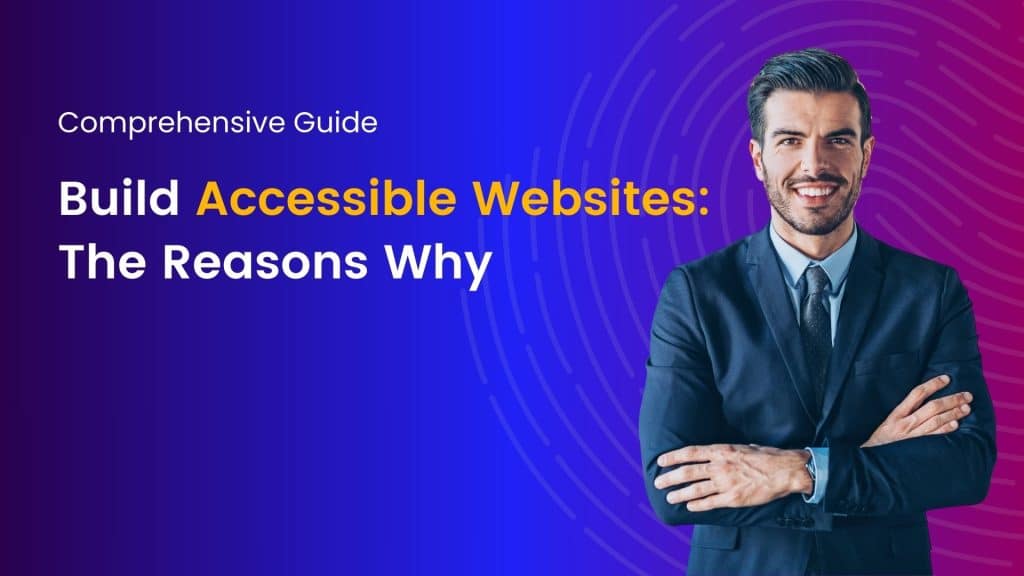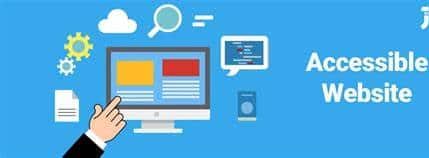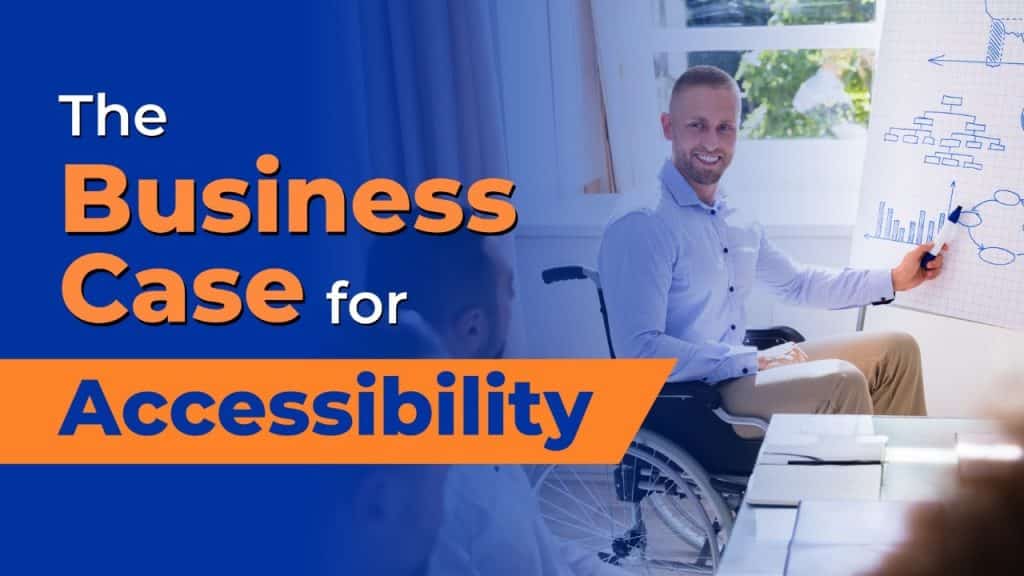Technology is always changing and advancing, as are user expectations. In a digital world, information, products, and services ought to be accessible equally to everyone. An accessible website is one that would enable the users of web systems to be successful in their usage and so accessibility has always been a concern in modern web design. It’s no longer just a matter of the law, but it is also a business imperative-cos good accessibility design can make all the difference in the reach, reputation, and bottom line of your company. To hostao, its philosophy in designing a website where accessibility will not lose the creativity and functionality.
This post discusses the importance of accessibility and provides practical tips for developing accessible websites for people with physical, sensory, or cognitive disabilities.
Ethical Responsibility of Web Accessibility
Accessibility is equity and serves to confirm that all people, regardless of their ability, have the same sort of experiences with digital deliverables. Business entities have ethical responsibility to access equal opportunities to their content, products, and services. A website is an online face of an enterprise, and excluding customers with disabilities from online experiences by not offering alternatives for the inaccessible equivalent is discriminatory.
Most users rely on access technologies, such as screen readers, voice commands, or alternative keyboards, to browse the web. A good website design that considers accessibility will confirm that users who use such devices will equally access the information or carry out the functions like other persons. We, at Hostao, commit ourselves to developing such websites because every individual has the right to such a thing.
The Business Case for Accessibility
In addition to legal and ethical arguments, accessibility also represents a strong business case:
1. Larger Market
The World Health Organization reports that more than 1 billion people, or about 15%, of the world’s population, live with some kind of disability. That is a massive market segment largely ignored. In that regard, you’ll tap this untapped audience and provide an exceptional user experience to everyone landing on your website. Companies embracing accessibility will reach a broader audience and gain a competitive edge in the marketplace compared to their peers who ignore accessibility.
Accessibility makes a brand look inclusive and responsible to its social setting. Consumers, nowadays, are more conscious of the businesses they are supporting. They want businesses that practice good behavior towards ethics, inclusivity, and accessibility. In providing an accessible website, you’re showing your customers that your brand knows diversity and diversity. This can bring forth goodwill, loyalty, and wonderful perception about your brand.
3. Increased Conversion Efficiency
An accessible website is more user-friendly. This means a more efficient ability for all of the visitors to navigate and complete actions-the whole purpose of visiting a website, including but not limited to making a purchase or signing up for a service. Accessible design tends to improve usability for all users: it simplifies forms, navigation, and performance, which maximizes conversions with lower bounce rates.
4. Reduced Development Costs
In the Long Term Many companies perceive that accessibility will cost more. Actually, on development and redesign work costs, savings can be made in the long term. A time-consuming as well as costly process is the correction of accessibility after development. At Hostao, we believe in building websites into the ground up, meaning that we will ensure that your website is designed to work for everyone from the start, saving you time and resources later on.
Key Guidelines in Building Accessible Websites
Accessibility of a website is a process involving various design and development techniques to make an optimized website. Below are some important guidelines on confirming inclusivity as well as accessibility in your website:
1. Keyboard-Only Accessible Most users with mobility impairments interact with a website only using a keyboard. This means all elements that are interactive-from menus to forms to buttons-must be accessible by keyboard alone. This should start with confirming there’s an intelligent tabbing order and clear indication of where users are moving when they use the “Tab” key to navigate a website.
Design specialists at Hostao carefully plan websites to be fully accessible to keyboard-only users.
2.Use ARIA Landmarks
If you apply ARIA (Accessible Rich Internet Applications) landmarks, you will provide users who are screen reader-dependent with extra context for more complex and interactive web items like drop-down menus, sliders, or expandable sections. These landmarks will further help assistive technologies interpret dynamic content and provide everyone with access to the richness of Web features.
Hostao uses ARIA landmarks wherever possible so your website is fully accessible without trading away functionality or interactivity.
3. Accessible Media Content
Images, videos, infographics, and all types of media content are an integral part of modern websites, but they also present several problems for visually impaired or hearing-impaired users. To confirm accessibility for these items, the websites should provide:
- Alt text to images: Descriptive alt text is highly important since it allows a screen reader to present content and perhaps context the image could convey to visually impaired people.
- Video content Transcripts and captions: An alternative text in video and audio will confirm users, who just so happen to have hearing impairments, can have equal access to the information. It also benefits those users who prefer reading or are in environments where audio cannot be played.
Hostao confirms that each media, whether it be visual or audio, has an accessible alternative. This way, through all the elements, every user can experience fully what you have to offer.
4. Scalable text and responsive design
Web accessibility does not end where content is perceivable; it must also be adjustable according to the preferences of diverse users. Scalable text guarantees that users can magnify or reduce font sizes according to their requirements without causing breakages on the layout or readability of your website. Additionally, the website must feature a responsive design as your website will ‘readjust’ according to screen sizes and devices for mobile and tablet users in perceiving the same level of accessibility.
At Hostao, we design with a philosophy of horizontal scalability and high responsiveness – so any website that is born to date should be functionally and aesthetically viable across all devices and screens in the browser.
5. Cognitive Accessibility Design
Cognitive impairments now disable millions of users around the globe – from learning disabilities to being aged and dementing. Sites with too much complexity or too many distractions are likely to frustrate users with these types of impairments. Use language that is straightforward and easy to understand: break text up into manageable chunks, using headings; avoid using jargon unless you really know you’re going to be using it correctly.
We here at Hostao make sure that each page is crystal-clear and focused, with proper logical structuring making information more readily processable for the users and making it a better experience for everyone.
Law and Legal Landscape of Web Accessibility
As the importance of web accessibility becomes even more entrenched in society, governments and legal bodies around the world enact stricter laws to ensure that businesses make equal access to their digital properties. In the United States, the Americans with Disabilities Act went further by including web accessibility within its influence, thereby compelling companies to make their online presence accessible. The European Union has recently enacted the European Accessibility Act, which compels all member states to confirm digital accessibility.
Failure to comply with such laws can get costly in the form of litigation, fines, and damaging one’s reputation. It has been over the past few years that web accessibility lawsuits have been on the rise. Most of these lawsuits arise from a website’s failure to meet the WCAG or complete disregard of accessibility.
Hostao keeps the businesses up-to-date with every change in legal requirements. We confirm that our clients are protected from future legal risks by building a website that adheres to international laws and best practices and future-proofs their websites.
Accessibility and the Future of Web Design
In and of itself, the future of web design is inclusivity and accessibility. To more immersive experiences like AR interfaces, VR, or voice-controlled interfaces such technologies will be crucial to have also presented at a high level of accessibility.
At Hostao, we are continuously innovating and up to the wave for better design trends, thus confirming that any new emerging technologies shall eventually be accessible to all users. In other words, if you take accessibility on your website today, you are setting up your digital presence for the future.
Conclusion
Accessibility isn’t a checklist to be checked off but a promise on confiring that your website is so functional and available to anyone, regardless of his or her condition. Here at Hostao, we happen to believe that access to web operations is essential and will bring people with disabilities into building an inclusive, user-friendly internet. When your website becomes accessible, you open your business to a larger audience and improve your SEO while demonstrating your commitment to corporate social responsibility. But above all, you confirm that you provide the positive digital experience to all types of users, including those with disabilities.
Hostao is the place where your accessibility concerns will be solved by accessibility experts confirming your website is compliant, engaging, and caters to your business’s most specific needs. Let’s step you through the next step toward digital inclusion because we believe that accessibility is not only the good thing to do but also good for business.
As a master's graduate in Computer Science, I blend my technical expertise with a passion for crafting content that simplifies complex topics. My focus is on creating clear, engaging material that resonates with a diverse audience. By staying current with trends in SEO, social media, and content strategy, I aim to produce content that not only educates but also connects, bridging the gap between technology and its users.





















